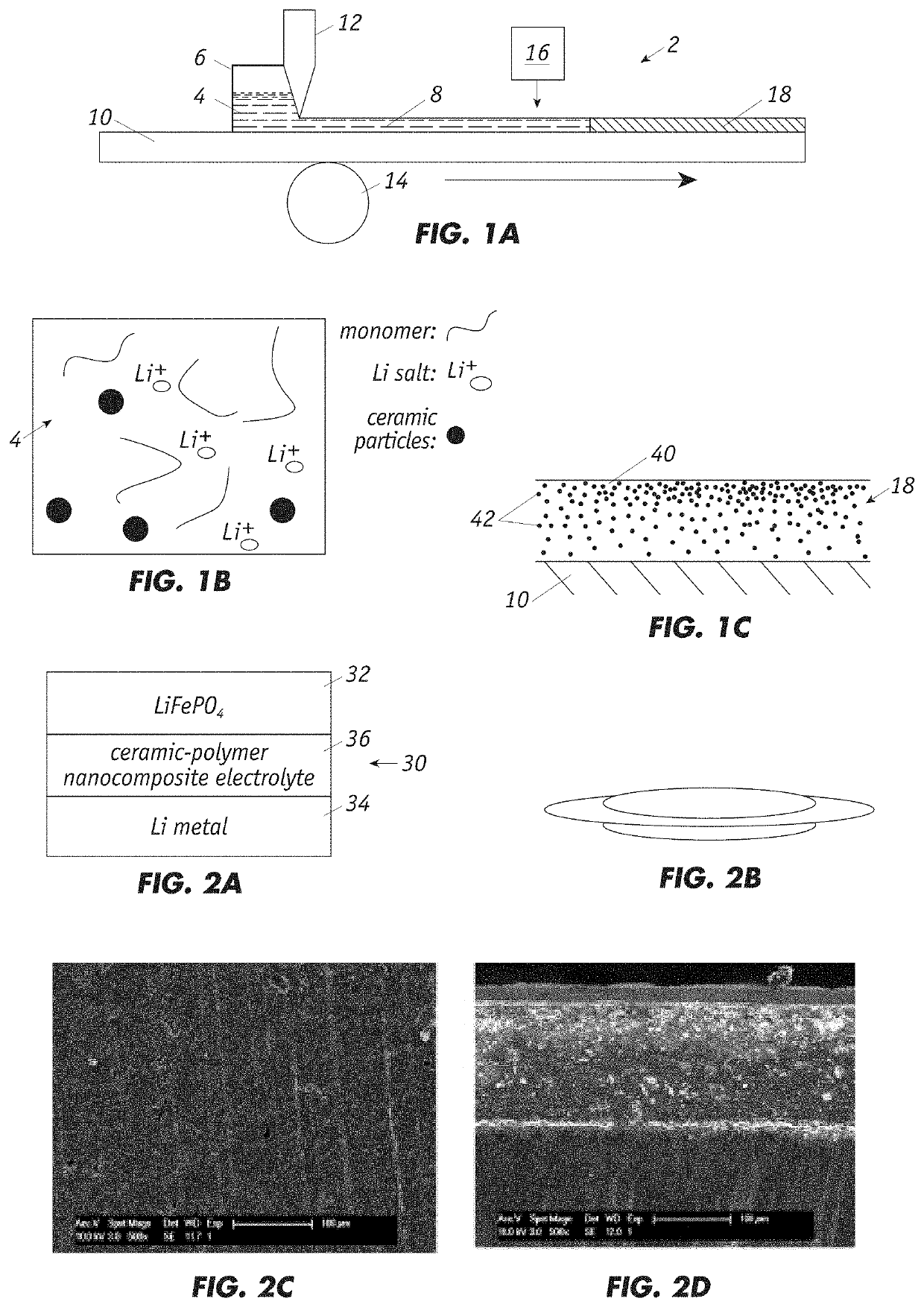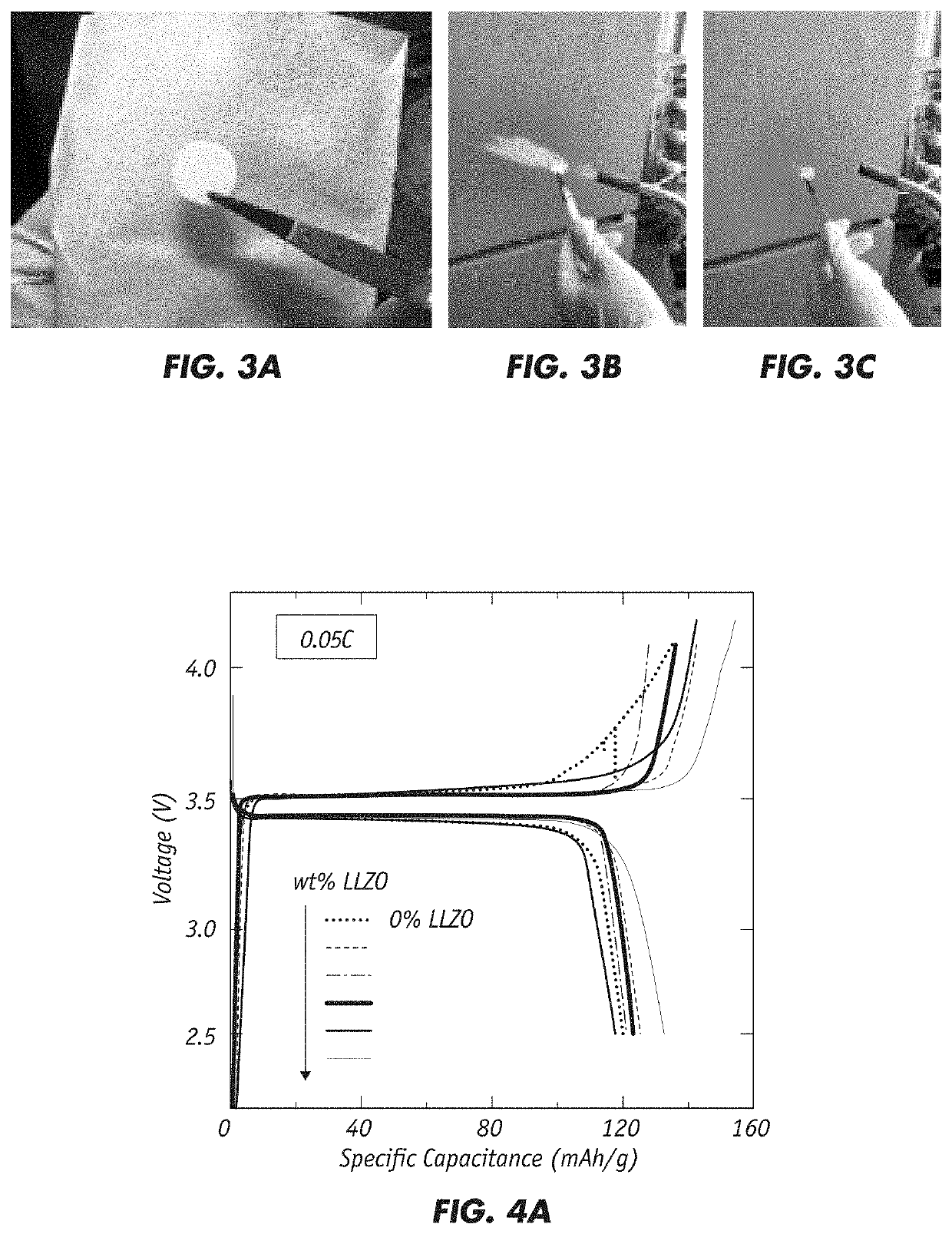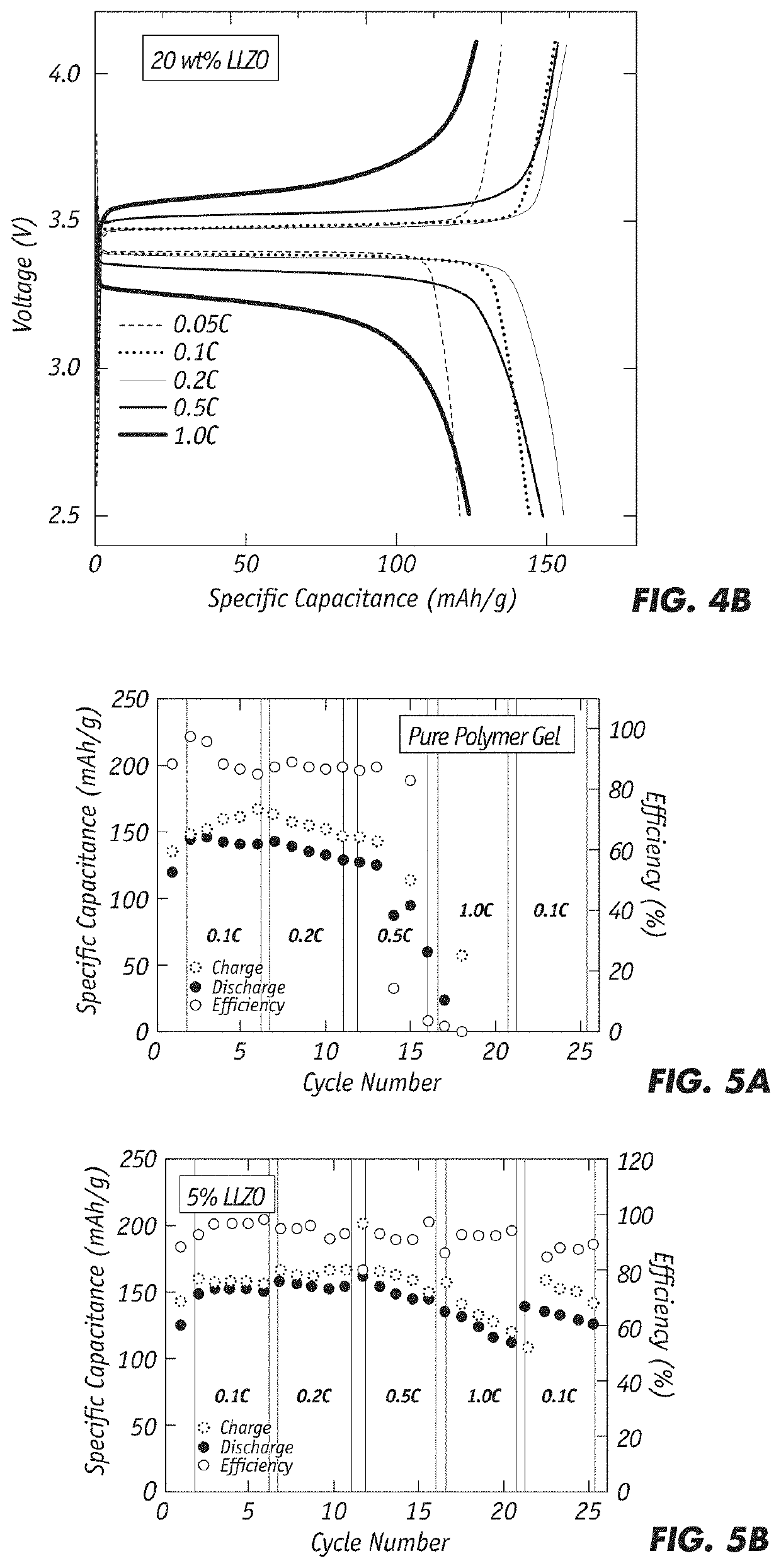High-ionic conductivity ceramic-polymer nanocomposite solid state electrolyte
- Summary
- Abstract
- Description
- Claims
- Application Information
AI Technical Summary
Benefits of technology
Problems solved by technology
Method used
Image
Examples
Embodiment Construction
[0029]The invention is directed to a highly ionic conductive solid electrolyte based on ceramic-polymer nanocomposite and the associated material processing methods. The high ion conductivity over a wide temperature window, optimized electrolyte-electrode interface, non-flammability of the novel class of electrolyte enables their use in any battery application from battery cells to integrated battery systems.
[0030]The solid electrolyte exhibits ionic conductivity of greater than 1×10−3 S / cm (at room temperature) and has a large electrochemical window of up to 4.8V (at RT). In addition, it has a wide use temperature with a thermally stable temperature of up to 150° C. and a glass transition temperature of less than −60° C. Finally, the solid electrolyte shows low interfacial resistance, good compatibility with both lithium metal and cathode materials, and enhanced mechanical strength with a Young's modulus that exceeds 50 MPa.
[0031]FIG. 1A shows a system 2 for preparing the solid ele...
PUM
 Login to View More
Login to View More Abstract
Description
Claims
Application Information
 Login to View More
Login to View More - R&D
- Intellectual Property
- Life Sciences
- Materials
- Tech Scout
- Unparalleled Data Quality
- Higher Quality Content
- 60% Fewer Hallucinations
Browse by: Latest US Patents, China's latest patents, Technical Efficacy Thesaurus, Application Domain, Technology Topic, Popular Technical Reports.
© 2025 PatSnap. All rights reserved.Legal|Privacy policy|Modern Slavery Act Transparency Statement|Sitemap|About US| Contact US: help@patsnap.com



